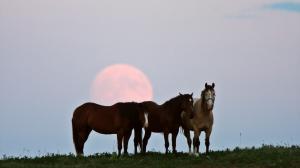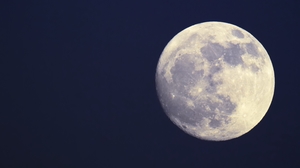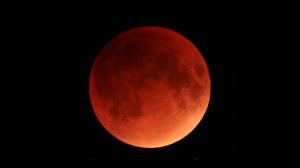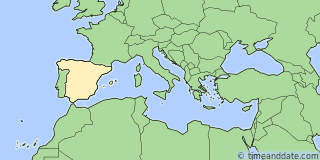| Current Time: | Nov 2, 2025 at 1:12:26 am |
|---|---|
| Moon Direction: | 239.64° WSW↑ |
| Moon Altitude: | 28.68° |
| Moon Distance: | 230,173 mi |
| Next Full Moon: | Nov 5, 2025, 2:19 pm |
| Next New Moon: | Nov 20, 2025, 7:47 am |
| Next Moonset: | Today, 3:54 am |
Moonrise, Moonset, and Phase Calendar for Málaga, September 2025
Scroll right to see more
| 2025 | Moonrise/Moonset | Meridian Passing | ||||||||
|---|---|---|---|---|---|---|---|---|---|---|
| Sep | Moonrise | Moonset | Moonrise | Time | Distance (mi) | Illumination | ||||
| 1 | - | 1:00 am | ↑ (234°) | 4:44 pm | ↑ (127°) | 9:17 pm | (23.9°) | 247,501 | 64.8% | |
| 2 | - | 1:50 am | ↑ (233°) | 5:37 pm | ↑ (126°) | 10:11 pm | (24.5°) | 244,727 | 74.2% | |
| 3 | - | 2:49 am | ↑ (234°) | 6:23 pm | ↑ (124°) | 11:06 pm | (26.7°) | 241,479 | 82.9% | |
| 4 | - | 3:53 am | ↑ (238°) | 7:03 pm | ↑ (119°) | 11:59 pm | (30.4°) | 238,016 | 90.2% | |
| 5 | - | 5:01 am | ↑ (243°) | 7:37 pm | ↑ (113°) | Moon does not pass the meridian on this day. | ||||
| 6 | - | 6:11 am | ↑ (250°) | 8:07 pm | ↑ (106°) | 12:50 am | (35.4°) | 234,618 | 95.9% | |
| - | 7:21 am | ↑ (258°) | 8:35 pm | ↑ (97°) | 1:39 am | (41.5°) | 231,582 | 99.2% | ||
| 8 | - | 8:31 am | ↑ (267°) | 9:01 pm | ↑ (89°) | 2:28 am | (48.4°) | 229,153 | 99.9% | |
| 9 | - | 9:42 am | ↑ (276°) | 9:29 pm | ↑ (80°) | 3:16 am | (55.6°) | 227,508 | 97.7% | |
| 10 | - | 10:55 am | ↑ (285°) | 9:59 pm | ↑ (72°) | 4:06 am | (62.8°) | 226,729 | 92.6% | |
| 11 | - | 12:10 pm | ↑ (293°) | 10:33 pm | ↑ (64°) | 4:58 am | (69.4°) | 226,806 | 85.0% | |
| 12 | - | 1:25 pm | ↑ (300°) | 11:14 pm | ↑ (58°) | 5:54 am | (75.0°) | 227,627 | 75.3% | |
| 13 | - | 2:40 pm | ↑ (304°) | - | 6:53 am | (79.1°) | 229,040 | 64.1% | ||
| 12:03 am | ↑ (55°) | 3:49 pm | ↑ (306°) | - | 7:54 am | (81.4°) | 230,868 | 52.3% | ||
| 15 | 1:01 am | ↑ (53°) | 4:48 pm | ↑ (306°) | - | 8:56 am | (81.6°) | 232,953 | 40.6% | |
| 16 | 2:07 am | ↑ (55°) | 5:38 pm | ↑ (303°) | - | 9:56 am | (79.9°) | 235,158 | 29.6% | |
| 17 | 3:16 am | ↑ (59°) | 6:18 pm | ↑ (298°) | - | 10:52 am | (76.5°) | 237,409 | 19.9% | |
| 18 | 4:25 am | ↑ (64°) | 6:50 pm | ↑ (292°) | - | 11:43 am | (71.9°) | 239,656 | 11.9% | |
| 19 | 5:31 am | ↑ (71°) | 7:18 pm | ↑ (285°) | - | 12:30 pm | (66.4°) | 241,878 | 5.8% | |
| 20 | 6:35 am | ↑ (79°) | 7:42 pm | ↑ (277°) | - | 1:14 pm | (60.4°) | 244,043 | 1.9% | |
| 7:36 am | ↑ (86°) | 8:05 pm | ↑ (270°) | - | 1:55 pm | (54.2°) | 246,117 | 0.1% | ||
| 22 | 8:36 am | ↑ (94°) | 8:27 pm | ↑ (262°) | - | 2:36 pm | (48.1°) | 248,031 | 0.5% | |
| 23 | 9:35 am | ↑ (101°) | 8:50 pm | ↑ (255°) | - | 3:17 pm | (42.2°) | 249,696 | 2.9% | |
| 24 | 10:35 am | ↑ (108°) | 9:15 pm | ↑ (249°) | - | 3:58 pm | (36.8°) | 250,992 | 7.1% | |
| 25 | 11:35 am | ↑ (115°) | 9:43 pm | ↑ (243°) | - | 4:42 pm | (32.1°) | 251,795 | 13.0% | |
| 26 | 12:35 pm | ↑ (120°) | 10:16 pm | ↑ (238°) | - | 5:28 pm | (28.3°) | 251,977 | 20.2% | |
| 27 | 1:36 pm | ↑ (124°) | 10:55 pm | ↑ (235°) | - | 6:17 pm | (25.5°) | 251,434 | 28.6% | |
| 28 | 2:34 pm | ↑ (126°) | 11:41 pm | ↑ (233°) | - | 7:08 pm | (24.1°) | 250,102 | 37.9% | |
| 29 | 3:27 pm | ↑ (127°) | - | - | 8:01 pm | (24.1°) | 247,967 | 47.7% | ||
| - | 12:35 am | ↑ (234°) | 4:15 pm | ↑ (125°) | 8:54 pm | (25.5°) | 245,097 | 57.9% | ||
| * All times are local time for Málaga. Time is adjusted for DST when applicable. They take into account refraction. Dates are based on the Gregorian calendar. Illumination is calculated at lunar noon. | ||||||||||
Total Lunar Eclipse visible in Málaga on Sep 7
Jan | Feb | Mar | Apr | May | Jun | Jul | Aug | Sep | Oct | Nov | Dec
Elsewhere on timeanddate.com

Comet Watch: 3I/ATLAS Flies Through the Solar System
“This is the first opportunity to study an interstellar object in such exquisite detail,” says Dr. Thomas H. Puzia, an old friend of timeanddate.

Full Moon Names
Ancient cultures gave names to the Full Moon. These names are still in use today.

Full Moon Phase: How Does It Work?
The third primary phase of the Moon is the Full Moon.

Blood Moon - Red Moon - Total Lunar Eclipse
A total lunar eclipse is often called a Blood Moon because of the red glow the eclipsed Moon gets. The term is also used for four total lunar eclipses that occur in a row.
